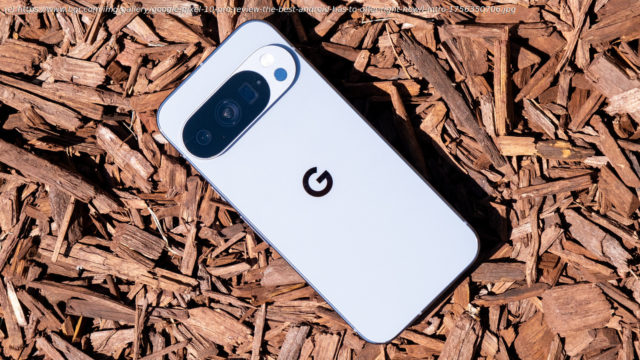While it might not offer the biggest leap over the Pixel 10, the Pixel 10 Pro is still the best Android phone on the market in 2025.
Base-level smartphones are getting a whole lot better. Over time, the features that were reserved for more expensive flagship phones eventually get cheaper to make and easier to add to lower-priced phones. Case in point: the base Pixel 10 has a telephoto camera this year — doing away with one of the main differences between the standard and «Pro» Pixel phones of the last few years.
So, where does that leave the Pixel 10 Pro? Well, it leaves it in a slightly different spot. Every phone in the Pixel 10 lineup has three cameras, the same performance, and helpful new features like full Qi2 support. In the end, you might assume that you should just save your money and go for the base Pixel 10 instead of its more expensive sibling.
But I still think there’s a case to be made for the Pixel 10 Pro, and its larger counterpart, the Pixel 10 Pro XL, which I’ll go over in a separate review. Yes, the basic hardware features are the same — but there are still plenty of ways the Pixel 10 Pro is a better phone than the standard Pixel 10.
Google completely revamped the design of the Pixel series with last year’s Pixel 9, so I certainly don’t mind that the Pixel 10 Pro looks mostly the same as last year’s device. In fact, I’m glad it does.
There are plenty of things that I love about the Pixel 10 Pro’s design, and all of those things come together in what I think is the most premium-feeling, well-built Android phone you can get right now. Sure, many of its design traits are taken straight from the iPhone, but I’m certainly not complaining when the traits that are taken from the iPhone help elevate the quality.
You’ll get things like the rounded edges on the glossy aluminum frame, the matte glass back with a glossy Google logo, and so on. On both the front and back you’ll get Gorilla Glass Victus 2, helping make the phone more durable — despite the fact that it’s not Gorilla Armor, Corning’s flagship product. That glass, as mentioned, is coupled with an aluminum frame, and as a whole, the device has an IP68 rating.
While there are plenty of design elements that are similar to the iPhone 16 Pro, there are still some major differences, and some of them I really like. For example, Google has stuck with its camera bar on the back. And while the look took some getting used to when Google first used it in the Pixel 6, I actually really like it now and appreciate that it helps stabilize the phone on a table, so that it doesn’t wobble when I touch the screen. To be fair, I’m rarely tapping the screen of an iPhone hard enough for the phone to actually move, but I still like that the Pixel 10 Pro is a little more stable.
The rest of the design of the phone is more or less as expected. The power button and volume rocker are on the right edge and there’s a USB-C port on the bottom. Noticeably absent is a SIM tray, which is due to the fact that Google has moved entirely to eSIM for the Pixel 10 Pro. I’m not going to get into whether or not that’s a good move or bad move here. I kind of like eSIM, but I’ve heard plenty of horror stories. Regardless of your preference, you’ll need to download your SIM if you want to use the Pixel 10 Pro.
The phone comes in four colors: Moonstone, Jade, Porcelain, and Obsidian. I’m reviewing the Moonstone model, which is a kind of blue-gray. It looks great. Overall, the Google Pixel 10 Pro is stunningly premium in both look and feel. It’s comfortable to hold and feels nice and durable.
On the front of the phone can be found a 6.3-inch LTPO OLED screen with a 1,280 x 2,856 pixel resolution, equating to a pixel density of 495 pixels per inch. Frankly, it looks stunning.
The high resolution helps make text crisp, even in smaller fonts, and the fact that it’s an LTPO OLED screen means that it can range from 1Hz to 120Hz. That doesn’t mean that it’ll feel smoother than the standard OLED screen on the base Pixel 10, which can still reach 120Hz. But it does mean that it’ll be a little more power efficient, considering the fact that it can range all the way down to 1Hz. Therefore, it doesn’t have to refresh the display as often when there’s a static image on the screen.
The display can reach a peak brightness of 3,300 nits, which is incredibly bright. I found that the device got easily bright enough to see what’s on the screen outdoors in direct sunlight, and I rarely turned the display higher than 80% or so.
Really, there’s nothing more I would have wanted from the screen on the Pixel 10 Pro. It addresses the only minor criticisms you could possible have with the Pixel 10, which is a slightly lower resolution (that’s still easily high enough), and the lack of an LTPO panel, which impacts power efficiency more than how the screen looks anyway.
Under the hood, the Pixel 10 Pro offers Google’s new Tensor G5 chip, which is the first Tensor chip to be manufactured by TSMC and makes use of TSMC’s 3nm process. For the uninitiated, that’s the same as other high-end chips out there right now, like Apple’s A18 Pro and the Qualcomm Snapdragon 8 Elite. In the Pixel 10 Pro, the chip is coupled with 16GB of RAM, along with 128GB, 256GB, 512GB, and 1TB storage options.
So, does that translate to a radically better-performing chip in the Pixel 10 Pro compared to last year’s Pixel 9 series? Well, if you’re just going by the numbers, not necessarily — the Tensor G5 doesn’t quite reach the heights of the A18 Pro and Snapdragon 8 Elite in benchmarks. In other words, the basic CPU performance of the Tensor G5 isn’t as impressive as those other chips, but that’s unlikely to necessarily translate to a massive difference in daily use. I found the phone to be more than powerful enough, easily handling heavy multitasking, gaming, and more without breaking a sweat. I suspect most will have a similar experience.
Part of that is helped along by the Pixel 10 Pro’s vapor chamber cooling system, which means it will perform a little better than the base Pixel 10, which lacks that cooling.






